DESERT CACTI
“Nowhere on this planet is the desert As fascinating as it is in Arizona”
The Saquaro Cactus
The Saquaro Cactus

The Saguaro (Pronounced Sa-WAH-row) grows only in the Sonoran Desert of Arizona, California and Sonora Mexico
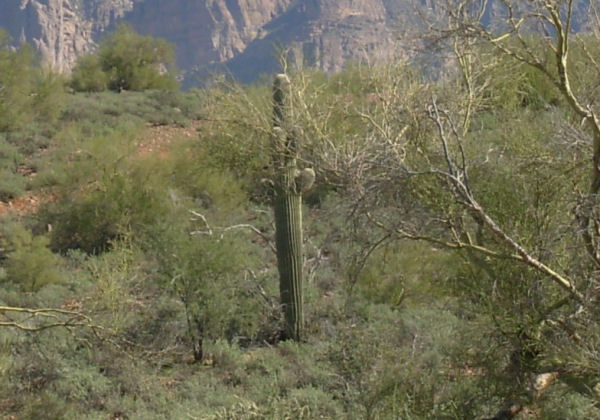
The Saguaro begins life as a shiny black seed no bigger than a period. It grows in the shaded, moist habitat of a nurse tree or shrub
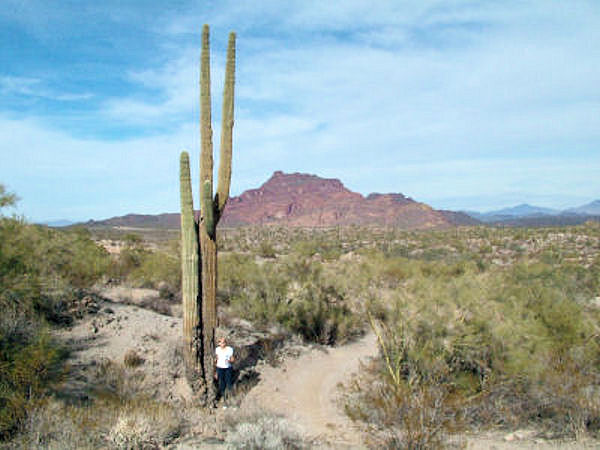
The Saguaro can grow as high as 50 feet and weigh 6 to 8 tons
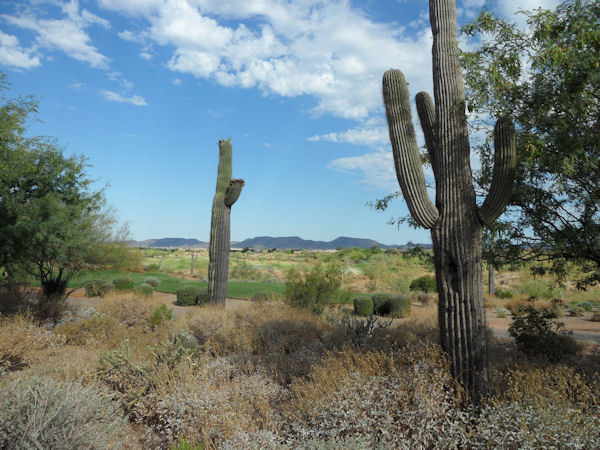
A Saguaro will be 65 years old before it forms its first arm
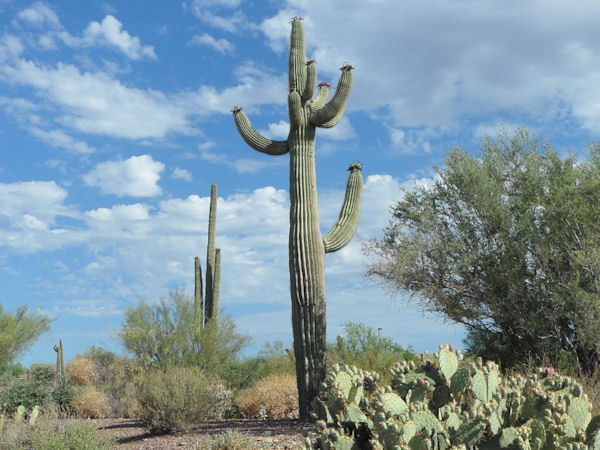
The largest Saquaros, with more than 5 arms, are estimated to be 200 years old

The arms can number over 25

The Saguaro provides shelter, food, water and refuge for many desert denizens

Saguaros flower in May and June, producing many buds near the tops of the stem and main branches

The Saguaro blossom is the State Flower of Arizona. The flowers are visited by bats, bees and doves

When pollinated, the flowers split open to reveal a bright-red, juicy pulp. The succulent fruits each contain 2,000-4,000 small, black seeds

These fruits and seeds are eaten readily by many birds, mammals and insects

The Saquaro Cactus provides food and shelter for many desert denizens

The Gila Woodpecker and the Gilded Flicker make their home in the Saguaro Cactus by chiseling out small holes in the trunk

Once they leave, they don't re-use the same nest, but other birds do, such as owls, finches, cactus wrens and purple martins

The Saguaro is smooth and waxy but the ribs have clusters of stout, 2-inch spines

When the Saguaro absorbs water, the outer pulp can expand like an accordion, increasing its weight by up to a ton

The Saguaqro can cover a wound with a resin-like substance which hardens into a permanent scab. These hardened holes are called "boots."
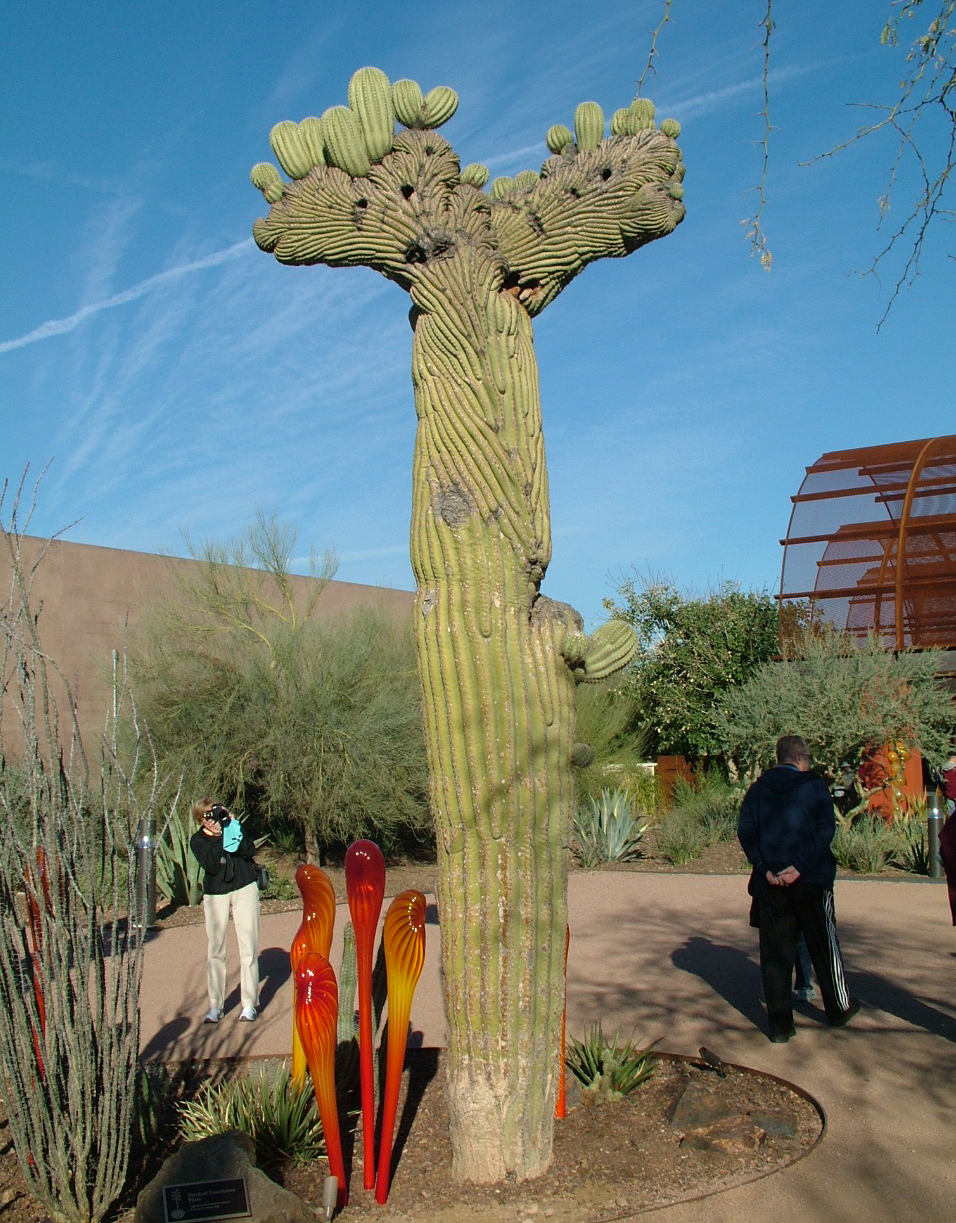
Mostrose Growth: The Saguaro develops a crest instead of arms. When damage caused by frost, insects or other factors disrupts the apical meristem.
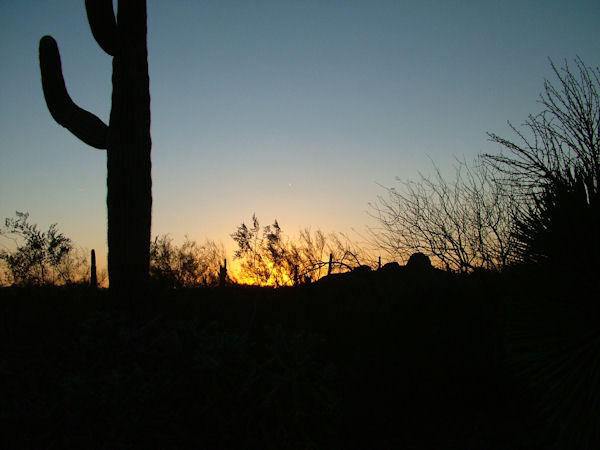
A Saguaro at sunset

When a Saquaro dies its rib wood is lightweight but strong and has many uses.

Because this cactus has no arms, it may have died young. Causes of death can be frost, insects or lightening.
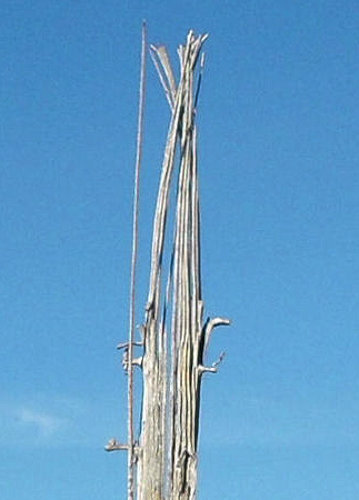
Native Americans used rib wood to make drill sticks for making fire, crosspieces for baby cradles, splints for injured limbs and as wattle in the construction of wattle and daub houses

After dying, a Saguaro still offers a place for birds to nest

Saguaro rib wood is lightweight but strong

My lamp made from a Saguaro rib
The Cholla Cactus
Teddy Bear & Chain Cholla

The Cholla (pronounced CHAW-yah) cacti have dangerous barbed pods.

The pods of the Cholla cactus detach easily when slightly touched and they have very sharp barbed spines.

The Teddy Bear Cholla has dangerous barbed pods.
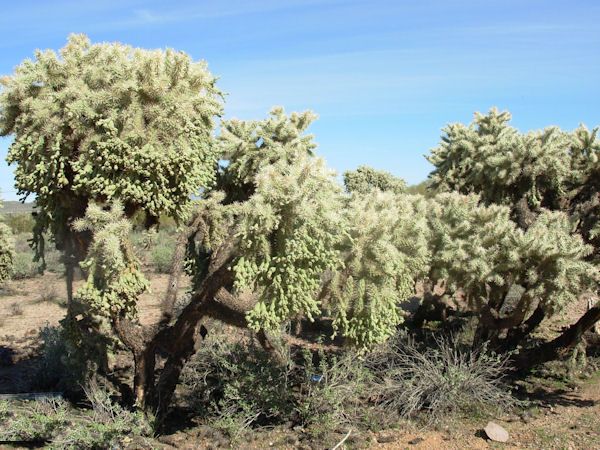
The Chain Cholla has dangerous barbed pods.
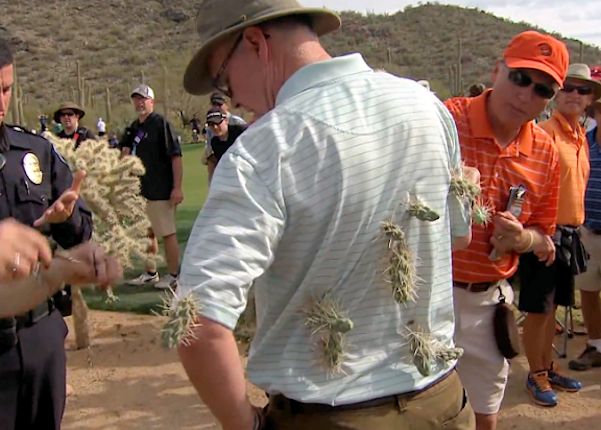
The barbed pods of the Cholla cactus quickly embed themselves into whatever touches them.

The sharp barbed spines detach so easily they can appear to have "jumped" giving the cholla cacti the knickname jumping cholla

The Teddy Bear Cholla has a soft, fuzzy appearance.
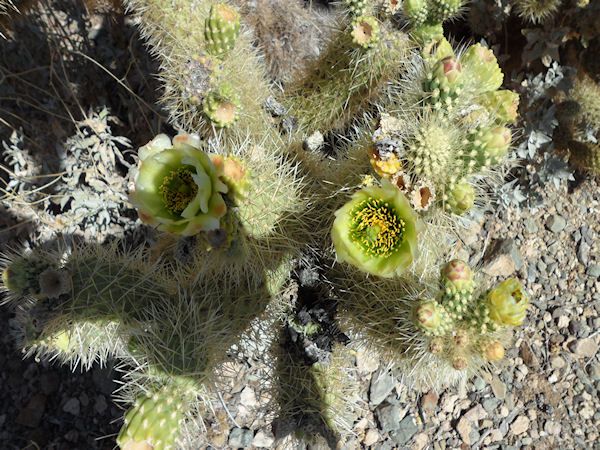
The Teddy Bear Cholla has yellow-green flowers.

The Chain Cholla looks like a tree and is the largest of the cholla species

The Chain Cholla grows with drooping branches of chained fruit that grow longer every year, sometimes getting as long as 2 feet
Staghorn & Buckhorn Cholla
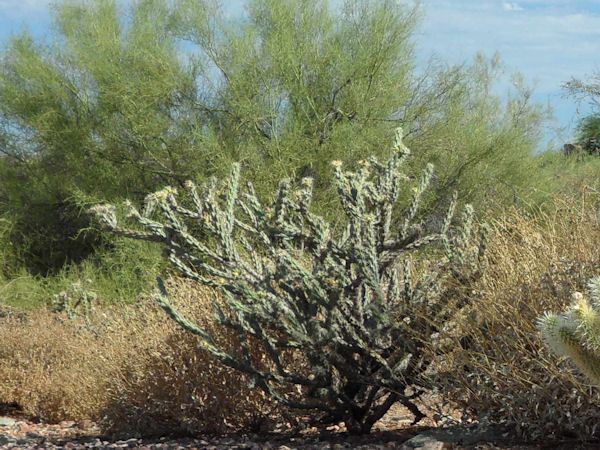
Staghorn Cholla and Buckhorn Cholla often occur together and are hard to tell apart

Staghorn Cholla and Buckhorn Cholla have thin branches
that arise from the ground or from a short trunk

The flower of the Staghorn Cholla

The flower of the Buckhorn Cholla

As a Staghorn Cholla ages it becomes very woody
Prickley Pear
Prickley Pear
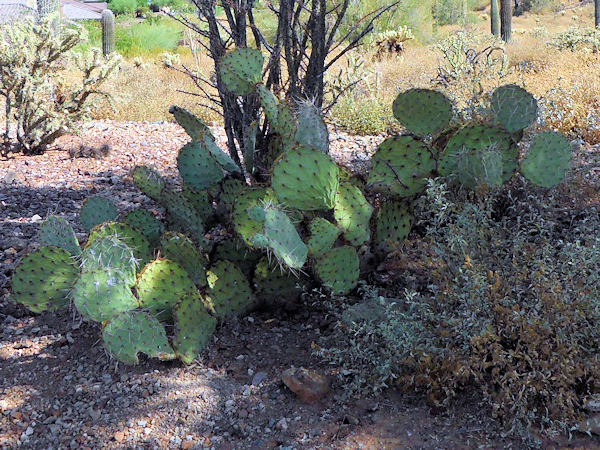
There are about a dozen species of Prickley Pear cactus. The pads vary in width, length, shape and color.
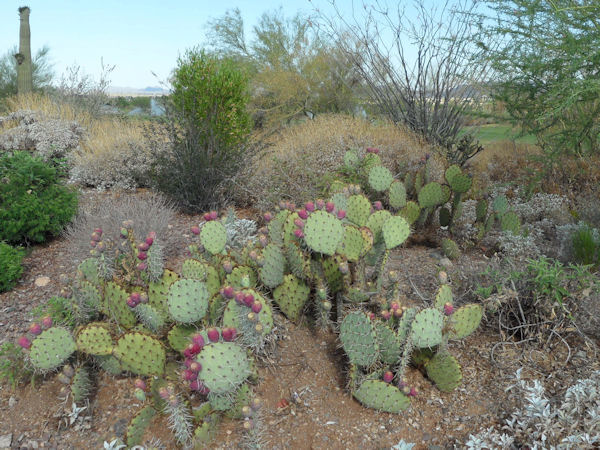
The fruits and the pads of most prickly pears are edible

Prickly Pear fruits are used for nectar and sold under the name tuna
The pads are cooked and eaten as a vegetable and sold under the name Nopalito

Great care must be taken when harvesting and preparing the pads and the fruits

Prickly Pear Cactus vary in height
from less than a foot to 6 or 7 feet

Most Prickly Pear cactus have yellow, red or purple flowers,
even among the same species



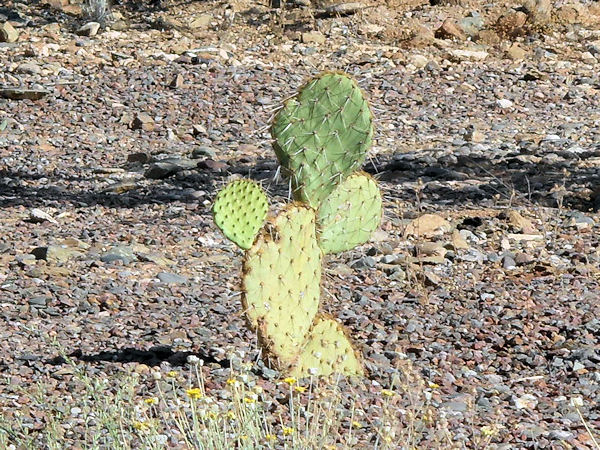
Mr. Prickly Pear Cactus
More Desert Cacti
Cactus in Bloom
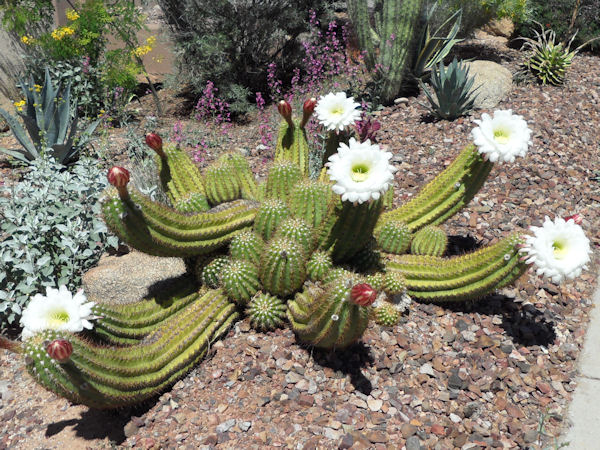
The blossoms of many cacti usually last only one day.

The beautiful white flower will last ony one day

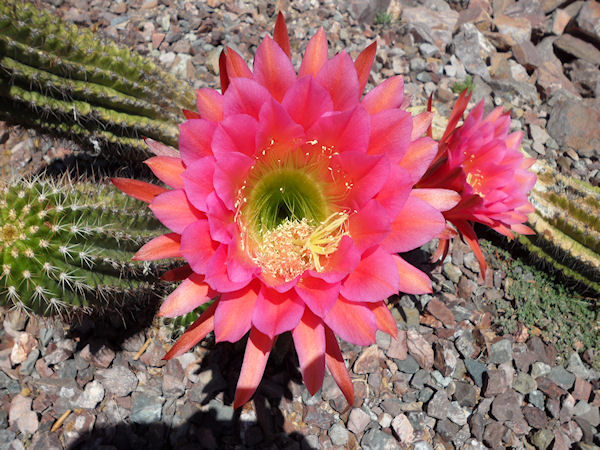
The beautiful pink flower will last ony one day

This little cactus looks dried out but it is blooming

Cactus flowers come in a variety of colors
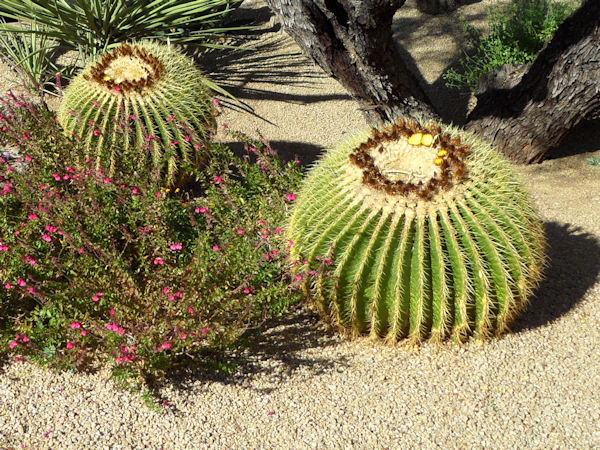
Golden Barrel Cactus grows faster on its shaded side
Therefore it usually leans southwest and is sometimes called
a Compass Cactus

Barrel Cactus flowers range from yellow to pink
They are eaten by birds and other animals

Ferocactus, meaning fierce or wild cactus are always cylindrical
or barrel shaped and are usually among the largest cacti



Organ Pipe Cacti

Organ Pipe Cactus is the second largest in the U.S.
(next to the Saguaro) growing as tall as 23 feet



©Copyright 2000
All rights reserved. No part of this publication may be reproduced,
stored, or transmitted in any form without my prior permission. Charles Tyrrell, Webmaster
stored, or transmitted in any form without my prior permission. Charles Tyrrell, Webmaster